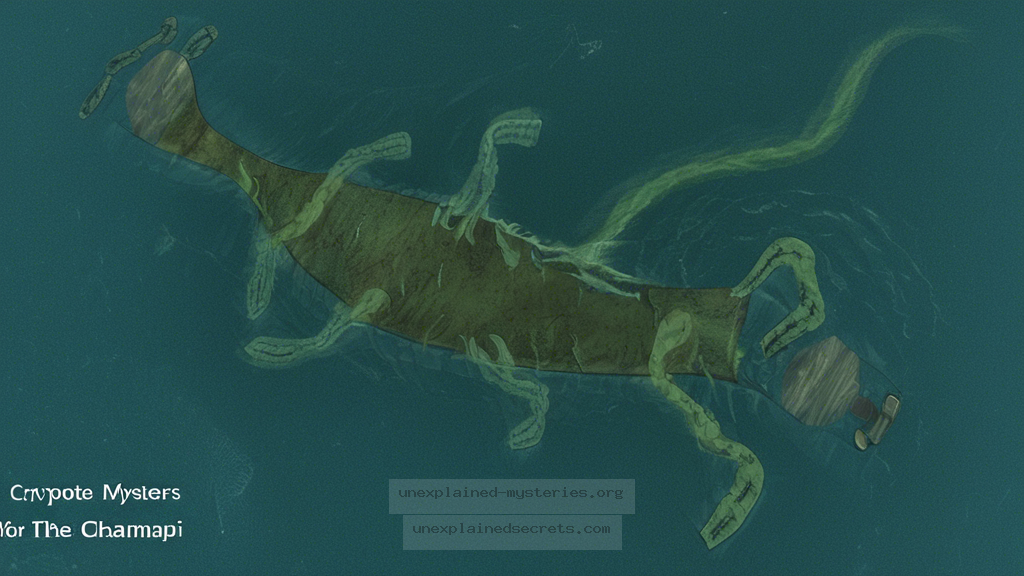What Secrets Lurk Beneath the Surface of Lake Champlain: The Ongoing Mystery of Champ?
What Secrets Lurk Beneath the Surface of Lake Champlain: The Ongoing Mystery of Champ?
The legend of Champ, the elusive creature of Lake Champlain, has captivated the imaginations of cryptozoologists, scientists, and the general public for decades. Is this legendary beast merely a figment of folklore, or is there something deeper lurking beneath the lake’s murky waters? Understanding the mystery of Champ not only enriches our appreciation for cryptozoology but also sheds light on human fascination with the unknown. This post delves into Champ’s history, sightings, scientific investigations, and the implications of these narratives on our understanding of cryptids.
Historical Context of Champ
The first documented sighting of Champ dates back to the 1609 journals of Samuel de Champlain, the French explorer who described a large creature swimming in the lake. Over the years, numerous accounts have surfaced, painting a picture of a creature resembling a plesiosaur—a prehistoric marine reptile. Local Native American tribes, such as the Abenaki, also have rich oral traditions featuring a lake monster, suggesting that the legend has deep cultural roots.
Through the years, the lore surrounding Champ has evolved. In the late 19th century, sightings increased, coinciding with the rise of tourism in the area. With each sighting, the legend grew, leading to a mix of excitement and skepticism that continues to this day. The lake itself, with its murky depths and vast expanse, acts as a fitting backdrop for such a mystery, fueling theories and stories that captivate both locals and adventurous tourists alike.
Core Concepts and Theories Surrounding Champ
Theories about Champ’s existence range from the scientifically plausible to the downright fantastical. Some researchers posit that the creature could represent an undiscovered species of freshwater marine animal, similar to the Loch Ness Monster in Scotland. Others suggest that Champ could be a misidentified known species, like a large sturgeon or a group of otters. Each theory presents a unique perspective on the potential reality of Champ’s existence.
Key Theories on Champ:
- Undiscovered Species: Some believe Champ may be a species of large aquatic reptile.
- Misidentification: Many sightings could be attributed to known creatures like sturgeons or logs.
- Cultural Myth: Champ might be a cultural construct more than a biological entity.
Documented Sightings: A Closer Look
Numerous sightings of Champ have been reported over the years, each with varying degrees of credibility. One of the most notable occurred in 1977 when a 2-minute video captured what many claimed to be Champ swimming in the lake. While skeptics dismissed the footage as inconclusive, it reignited interest in the legend.
In 2005, a research team led by the Discovery Channel utilized sonar technology in an attempt to locate the creature. They reported anomalies that could suggest the presence of a large object beneath the water, though definitive proof was elusive. Some researchers have also conducted interviews with locals and compiled a database of sightings, revealing patterns in the reported locations and behaviors of the creature.
Scientific Investigations and Methodologies
Scientific interest in Champ has led to various investigation methodologies. These range from traditional eyewitness interviews to advanced technological applications like sonar mapping and underwater cameras. The use of sonar technology, in particular, has provided valuable data, allowing researchers to locate and analyze large underwater objects that could potentially be Champ.
However, the scientific community remains divided on the credibility of such methods. While some argue that technology has yet to yield conclusive evidence of Champ’s existence, others contend that the vastness of Lake Champlain makes it difficult to capture definitive proof. The lake covers over 120 miles, with depths reaching 400 feet, presenting a considerable challenge for researchers.
Alternative Perspectives: Skepticism vs. Belief
The discourse surrounding Champ often highlights a divide between skeptics and believers. Skeptics emphasize the lack of concrete evidence and the prevalence of hoaxes. High-profile sightings have been followed by debunking, often revealing the ordinary origins of what was initially perceived as extraordinary. For instance, the infamous 1977 video has been dissected and debated, leading many to conclude it was a misidentified object.
On the other hand, believers argue that the sheer volume of sightings over centuries cannot be dismissed outright. They contend that the absence of evidence is not evidence of absence and that many natural phenomena remain unexplained. This perspective fosters a sense of wonder and curiosity, encouraging exploration and investigation into the unknown.
Common Misconceptions About Champ
Many misconceptions persist regarding Champ and the nature of cryptozoology itself. One common belief is that all cryptids are hoaxes or mythological. However, cryptozoology investigates the possibility of undiscovered species based on eyewitness accounts and folklore. Champ’s legend serves as a case study in balancing skepticism with open-minded inquiry.
Another misconception is that sightings are uniformly unreliable. While some reports may lack credibility, numerous accounts come from reputable witnesses, including seasoned locals and scientists. These accounts provide valuable insight and merit further investigation, illustrating the complexity of discerning fact from fiction.
Common Misconceptions:
- All Cryptids Are Hoaxes: Many cryptids, including Champ, warrant serious investigation.
- All Sightings Are Unreliable: Credible witnesses exist, providing valuable accounts.
Best Practices for Investigating Cryptids
For those interested in exploring the mystery of Champ or other cryptids, certain best practices can enhance the investigation. First and foremost, approach the subject with an open mind while maintaining a critical perspective. Collect data from reliable sources, including eyewitness accounts, photographs, and scientific studies.
Utilizing technology can also bolster investigations. Tools like sonar, underwater drones, and camera traps can provide new insights into the aquatic environment. Engaging with local communities and historians can yield invaluable context and potentially lead to new sightings or discoveries.
Future Developments: Ongoing Research and Exploration
The future of Champ investigations looks promising. Ongoing research initiatives, such as those conducted by local universities and cryptozoological organizations, continue to explore the depths of Lake Champlain. Advances in technology, including improved imaging techniques and data analysis, may soon provide clearer insights into the lake’s mysteries.
Additionally, renewed interest in cryptozoology as a legitimate field of study has led to increased funding and cooperation among scientists and enthusiasts. This collaborative approach may ultimately lead to discoveries that shed light on Champ and the broader question of undiscovered species in our world.
Conclusion: The Mystery Continues
The legend of Champ remains a fascinating enigma at the intersection of folklore, science, and human curiosity. With a rich historical background, documented sightings, and ongoing investigations, the mystery of this elusive creature encourages a blend of skepticism and wonder. As technology advances and research methodologies evolve, we may one day uncover the truth behind Champ—whether it be a fascinating new species or a compelling tale woven into the fabric of our cultural history.
In the end, Champ serves as a reminder of the vast unknowns that still exist in our world, inviting us to explore, question, and seek out the truth behind the mysteries of life. 🔍✨
Other Articles
Recent Posts
- What Happened to Flight MH370? The Conspiracy Theories That Still Haunt Us
- What Secrets Lurk Within the Walls of the Infamous Trans-Allegheny Lunatic Asylum?
- What Evidence Supports the Existence of Bigfoot in the Pacific Northwest?
- What Happened to the Indus Valley Civilization? Unraveling the Mysteries of Ancient Urban Life
- Can Telepathy Be Scientifically Proven Through Laboratory Evidence?







